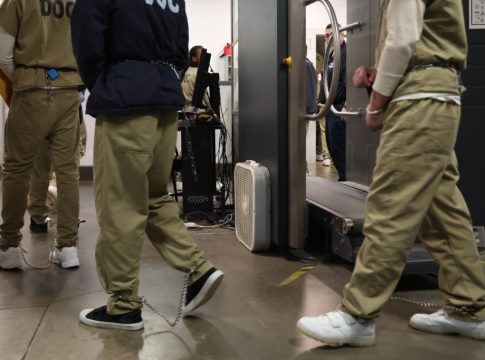Arrest Trends Shift in Chicago: Pandemic’s Impact Lingers Five Years Later
Chicago, IL — Five years since significant reductions in arrests emerged during the COVID-19 pandemic, Chicago’s law enforcement landscape continues to evolve, revealing a complex relationship between crime rates and policing strategies. Research conducted by Loyola University Chicago, in collaboration with local officials, presents a revealing look into these changes through a new data dashboard.
A Rise and Fall in Arrests
In 2019, Chicago police recorded nearly 80,000 arrests. However, recent years have seen a dramatic decline, with new data indicating that over 47,000 arrests were made in 2024—significantly lower than the 78,000 recorded in 2019. The dashboard, funded by the MacArthur Foundation’s Safety and Justice Challenge, aims to illustrate these trends, shedding light on the shifts in the Cook County criminal justice system since the pandemic began.
David Olson and Don Stemen, co-directors of Loyola’s Center for Criminal Justice, emphasized the necessity of this tool for understanding long-term patterns in crime management. “It’s important for stakeholders to note big trends that could shape our strategies moving forward,” remarked Ali Abid, Deputy Director of the Cook County Justice Advisory Council.
The Dashboard’s Insights
This public data initiative integrates information from multiple sectors, including police, court systems, jails, and prisons, highlighting how cases progress through the criminal justice system. While arrests have fluctuated slightly post-pandemic, incidents reported to police have remained consistent, suggesting potential shifts in policing practices.
“Increases in drug arrests haven’t materialized, implying a change in policing habits rather than a reduction in drug use,” Olson pointed out, noting that those charged for drug offenses are increasingly being sentenced to probation rather than incarceration.
Conversely, arrests for weapons offenses have surged, climbing from approximately 4,600 in 2019 to over 5,300 in 2024.
Impacts on Jail Population
Interestingly, the dashboard reveals an uptick in the Cook County Jail population this year, alongside a rise in detentions ordered by judges. Olson foresees this trend potentially plateauing, although he emphasizes that 2025 data is still preliminary.
“This situation appears to be developing, but trends indicate a possibility of continued increases for a time,” added Olson, reflecting on the broader implications of these shifts for policing and public safety in Chicago.
As Chicago continues to navigate the aftermath of the pandemic, the interplay between crime rates, arrest practices, and judicial policies remains a critical focus for law enforcement and community stakeholders alike. Further analysis and updates on the evolving dynamics of the city’s criminal justice system are anticipated in the coming months.

Focuses on crime, public safety, and regional events.
Bio: Marcus is a community-based journalist passionate about reporting impactful stories that matter most to readers.

